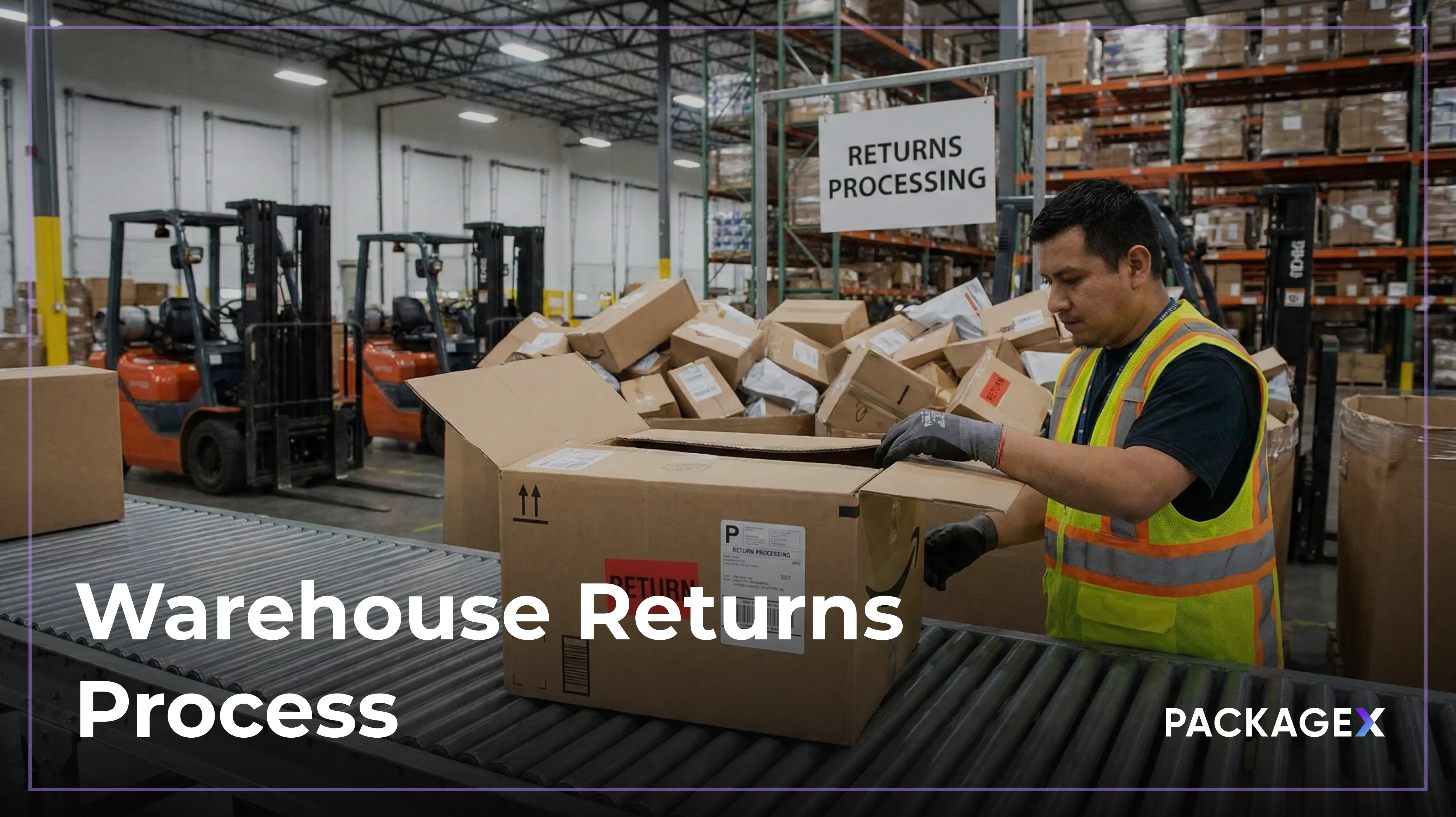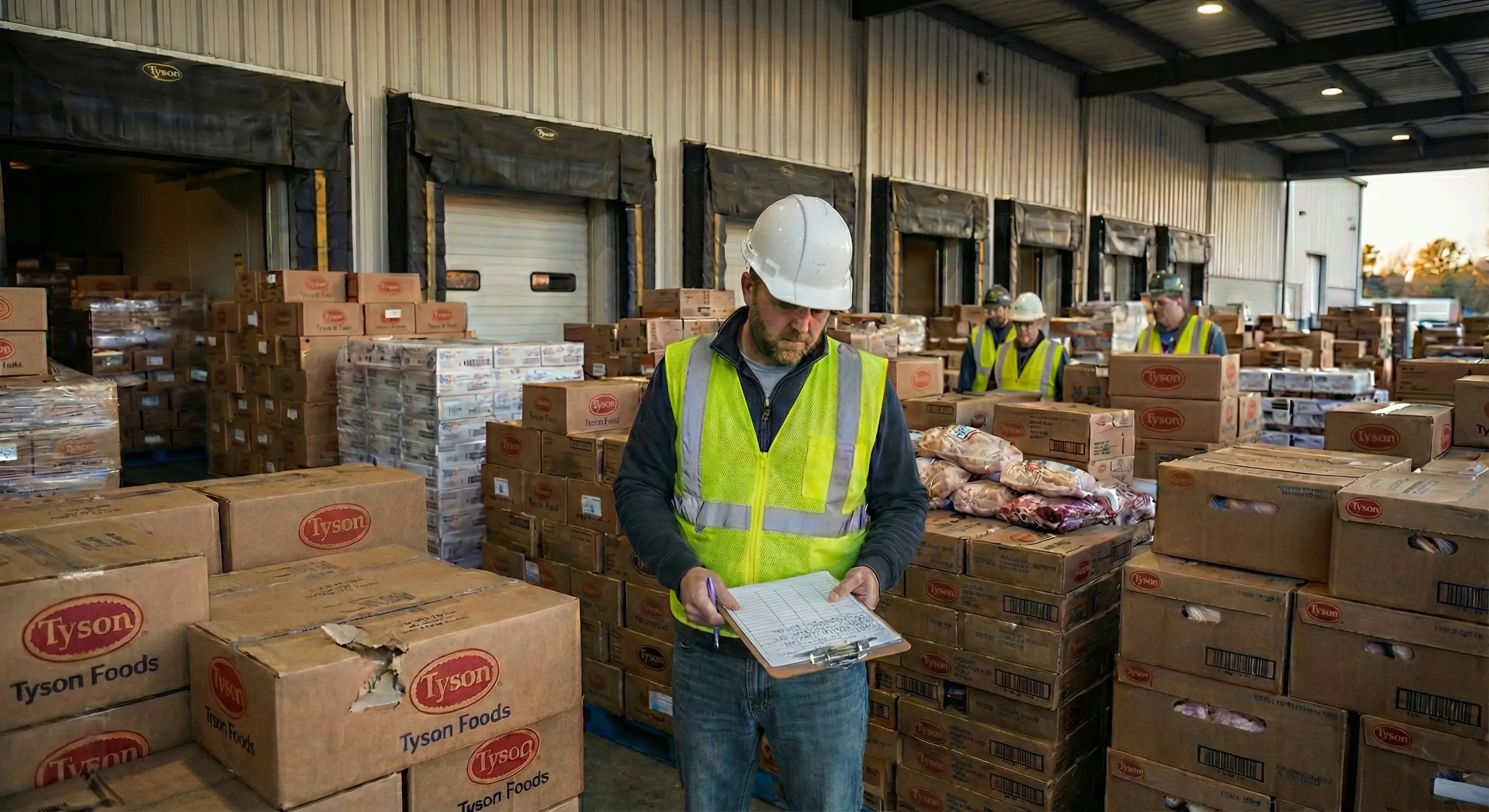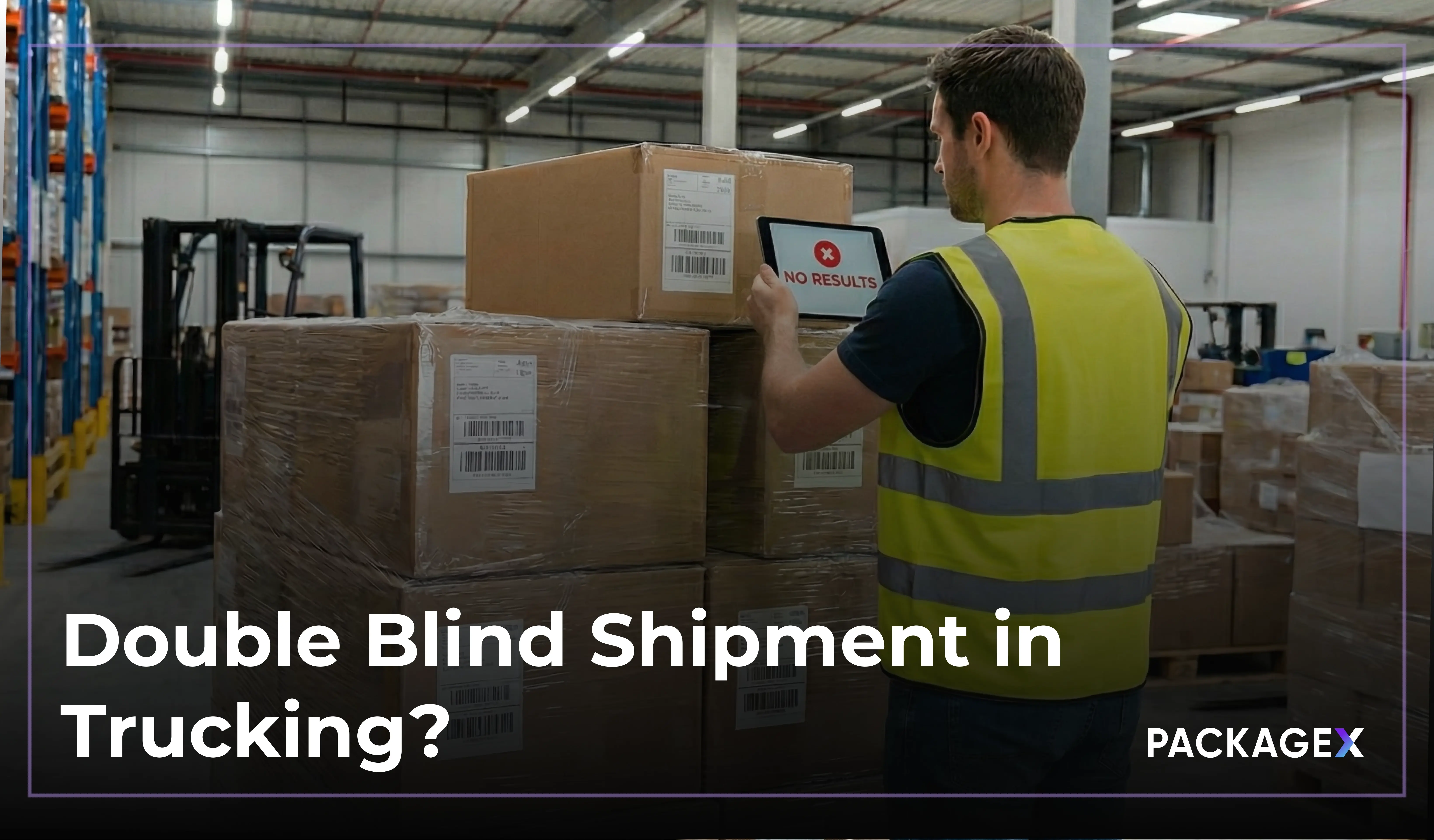The logistics industry is moving faster than ever. What used to take days now happens in a matter of hours. Businesses in e-commerce and fulfillment are under constant pressure to deliver quickly, accurately, and at scale.
Third-party logistics software has become a cornerstone of modern supply chain management. With real-time tracking and warehouse automation, it provides complete inventory visibility and greater control over daily operations. Teams can respond to changes faster, reduce costly errors, and maintain customer trust.
The numbers tell the story. The global 3PL software market is valued at $1.5 billion in 2025 and is projected to reach $2.8 billion by 2035, growing at a 6.4% annual rate. In today’s competitive logistics industry, the right 3PL inventory management software is a vital tool for growth, precision, and long-term success.
In this blog, we’ll explore how 3PL inventory management software empowers businesses to scale efficiently, boost fulfillment accuracy, and strengthen their position in an increasingly competitive logistics market.
What Is 3PL Inventory Management Software?
A third-party logistics provider (3PL) handles storage, fulfillment, and shipping for many different clients at once. Managing all that manually or with a basic spreadsheet doesn’t work for long. That is where 3PL inventory management software comes in. It is a specialized warehouse management system built to keep multi-client operations organized and efficient.
Unlike standard inventory tools, this software is made for the complex world of 3PLs. It allows warehouses to track stock in real time, manage client-specific rules, and automate tasks such as order routing and billing. A good inventory management software for 3PL connects with online stores, shipping carriers, and accounting systems so data moves smoothly between platforms.
The system supports real-time order tracking and inventory control across multiple locations. This gives a 3PL provider clear visibility into where products are, which orders are being processed, and how warehouse space is being used.
In simple terms, 3PL inventory and warehouse management software helps logistics businesses gain visibility, improve accuracy, and scale their operations without losing control.
Core Features of 3PL Inventory Management Software
Below are the core features that define top-performing 3PL inventory management systems.
1. Real-Time Inventory Tracking
Every order, pallet, and bin is tracked the moment it moves. Real-time inventory tracking allows teams to see exactly what is in stock across all client accounts and warehouse locations. There is no waiting for updates or reconciling spreadsheets. For example, when a customer checks inventory at 3 PM, they see the same data your warehouse staff does. This transparency reduces stock discrepancies and improves planning accuracy.
2. Automated Order Fulfillment
A strong 3PL WMS moves work forward without constant supervision. Automated order fulfillment routes tasks to the right zones, generates packing slips, and triggers shipping labels automatically. This keeps operations moving during high-volume periods and helps prevent delays. It also ensures consistent fulfillment speed and accuracy across clients.
3. Barcode Scanning and RFID Accuracy
Barcode systems and RFID technology help maintain accurate records at every step. Each scan updates the system immediately, reducing the risk of mispicks or misplaced stock. With handheld scanners or mobile apps, warehouse staff can track thousands of SKUs quickly and reliably, keeping data clean and up to date.
4. Cloud-Based WMS and Multi-Location Visibility
A cloud-based WMS connects all facilities, teams, and clients in one centralized system. Managers can view inventory levels, track orders, or adjust workflows from any location. Multi-location visibility helps balance stock, avoid shortages, and improve overall warehouse coordination. This flexibility is essential for growing 3PLs handling multiple fulfillment sites.
5. Billing Automation and Smart Analytics
Manual billing can lead to missed charges and wasted hours. Billing automation captures every service, such as storage or labeling, and links it to the correct client automatically. Smart analytics then turn this data into insights about efficiency, costs, and performance. These tools support better pricing strategies and long-term growth planning.
Benefits of Using 3PL Inventory Management Software
Here are some of the proven benefits of incorporating a 3PL inventory management system:
Improved Inventory Accuracy
Every order starts with knowing exactly what you have. A 3PL inventory management system keeps real-time records of your products across all locations. It reduces stockouts, overstocking, and missed counts, the usual pain points for e-commerce retailers and SMBs. With automated updates, teams no longer rely on guesswork. The result is stronger inventory accuracy and smoother daily operations.
Greater Operational Efficiency
Repetitive tasks can drain time and focus. With 3PL software for small business, automation handles routine work like order routing, labeling, and billing. Employees can focus on higher-value tasks while the system ensures accuracy. These gains build measurable operational efficiency and lead to consistent cost savings over time.
Better Customer Satisfaction
Accurate orders and faster fulfillment create happy customers. When clients see their inventory and order status in real time, communication gaps shrink. This transparency improves trust and long-term relationships, especially in competitive logistics operations where speed matters.
Scalable Logistics for Growth
As order volumes rise, the right platform grows with you. Cloud-based systems support more clients and warehouses without new infrastructure. This kind of scalable logistics management helps small teams handle enterprise-level demand confidently. It’s why investing in the best 3PL software is less about spending more and more about preparing to grow smart.
Data-Driven Insights
Modern tools turn activity data into data-driven insights. By tracking trends in fulfillment center’s, error rates, or inventory forecasting, managers can spot inefficiencies early and make informed decisions. In a business where every second counts, that clarity becomes your real competitive edge.
Challenges Without Dedicated 3PL Inventory Software
Running a warehouse without a proper 3PL inventory system can feel like juggling in the dark.
Here’s what usually happens when there’s no dedicated 3PL inventory management software in place:
- Manual data entry eats up time. Teams spend hours logging shipments, tracking SKUs, and correcting errors that could have been automated.
- Warehouse inefficiencies build up. Misplaced stock and inconsistent labeling slow down order picking and packing.
- Inaccurate stock levels cause frustration. Without real-time tracking, staff can’t tell what’s actually available. This often leads to costly overstocking or missed orders.
- Order delays become common. Limited visibility across clients and locations makes it hard to spot bottlenecks early.
- Billing errors slip through. Missed charges or mismatched invoices impact revenue and client trust.
Over time, these issues pile up. Eventually resulting in lost time, unhappy customers, and shrinking profit margins. The next step is choosing 3PL inventory management software that helps eliminate these pain points before they stall your growth.
Choosing the Right 3PL Inventory Management Software in 2025
Selecting the right 3PL inventory management software can feel like a big step. The right system transforms how your warehouse operates and scales with demand. In 2025, the best options balance automation and easy integrations with your existing tools.
1. Focus on Scalability and Automation
- Choose software that grows with your business. The best systems handle rising order volumes and multiple clients without slowing down.
- Look for built-in automation tools that reduce manual data entry. Features like automated billing, order routing, and real-time inventory updates save hours of repetitive work.
- Reliable automation improves accuracy and keeps operations smooth during peak seasons.
2. Compare Cloud-Based vs On-Premise Options
- Cloud-based systems offer flexibility, remote access, and lower upfront costs. Updates happen automatically, keeping your system current without IT headaches.
- On-premise systems give you full control but require internal maintenance, hardware, and manual updates.
- When comparing cloud-based vs on-premise setups, think about your IT resources, budget, and how fast you want to implement.
3. Check Integration Capabilities
- Seamless integrations with ERP systems, accounting software, and e-commerce platforms (via APIs) are a must.
- Connected systems reduce duplicate work, improve data accuracy, and give you real-time insights across every warehouse location.
- Avoid tools that create data silos or require complex workarounds to communicate with your existing stack.
4. Prioritize Ease of Onboarding and Vendor Support
- A great system is only valuable if your team can use it confidently. Choose software with a clear interface and strong training resources.
- Ask vendors about their onboarding timelines, support channels, and post-launch assistance.
- Reliable support ensures smooth adoption and faster productivity gains.
5. Test Before You Commit
- A hands-on trial helps confirm that the platform aligns with your workflows, integrates with your systems, and delivers measurable ROI.
When choosing 3PL inventory management software, focus on automation, integration capabilities, ease of onboarding, data security, and software scalability. The best 3PL WMS inventory management software will simplify operations, support your team, and grow with your business
3PL Software vs ERP vs WMS: What’s the Difference?
Here’s how 3PL, ERP and WMS differ:
ERP (Enterprise Resource Planning)
An ERP is an all-in-one business suite that ties finance, HR, sales, and inventory into one place. Think of it as business process automation on a company scale. It is great for accounting and planning across departments. A retailer might use ERP to link purchasing, invoicing, and reporting. It is not built for day-to-day warehouse workflows.
WMS (Warehouse Management System)
A WMS focuses on warehouse management and operations. It guides receiving, putaway, picking, and packing. It shines at inventory accuracy and improving fulfillment speed. For example, a warehouse using barcode scanning can lift accuracy to well over 95 percent. WMS is operational, not multi-client at its core.
3PL Software (Multi-Client Logistics Software)
3PL software is logistics software made for multi-client environments. It handles separate SKUs, billing rules, and portals for many customers. If you need inventory management software for 3PL providers, this is the tool. The best 3PL software for inventory management captures client-specific charges automatically and keeps each account separate.
Implementing Best Practices for 3PL Inventory Management Systems
Rolling out a new 3PL inventory management system takes more than just switching on new software. To get real value from the best 3PL software for inventory management, you need a clear plan and the right setup before you go live.
1. Start with clean data
Before migration, review all your product records. Standardize SKUs, check for duplicate entries, and make sure item descriptions and barcodes are consistent. Clean data sets the stage for accurate inventory tracking and smooth system integration later.
2. Connect your systems early
Link your e-commerce platforms, accounting software, and shipping tools as part of the initial setup. This helps eliminate manual data entry and reduces errors once operations begin. Proper integration also gives your teams a single source of truth for every order.
3. Train your staff in phases
Onboarding managers and IT teams should roll out training in stages. Let warehouse staff test core functions like receiving, picking, and billing in a controlled environment. Phased staff training builds confidence and improves user adoption.
4. Run pilot tests
Before full deployment, run pilot orders in a testing environment. This step helps identify workflow bottlenecks, missing data, or configuration gaps that could slow real operations.
5. Track and optimize
After launch, monitor KPIs such as order accuracy, pick rate, and inventory turnover time. Use these metrics to fine-tune workflow optimization and keep your system performing at its best.
Why Leading Enterprises Choose PackageX to Modernize Logistics?
For enterprise logistics teams managing thousands of packages, assets, and warehouse operations, speed and visibility can make or break efficiency. PackageX helps global organizations turn complex, manual workflows into streamlined, data-driven fulfillment systems that scale effortlessly.
Here’s why leading enterprises trust PackageX:
- Scalable logistics operations that grow across warehouses, campuses, and regions.
- AI-powered OCR scanning for faster, error-free intake and tracking.
- Smart delivery options including lockers, desk delivery, and self-service pickup.
- Real-time tracking and SLA monitoring that ensure transparency and compliance.
- Unified inventory and asset management, all in one connected platform.
PackageX empowers logistics providers and warehouse teams to boost warehouse efficiency, enhance visibility, and create truly scalable logistics systems.
FAQs
How does 3PL software differ from regular warehouse management systems?
3PL software is built for third-party logistics providers managing multiple clients, each with unique inventories, billing, and workflows. Unlike standard WMS, it supports multi-client visibility, automated billing, and flexible integrations, helping 3PLs scale without losing control or accuracy.
What features should I look for in the best 3PL software?
Look for real-time inventory tracking, automated billing, cloud accessibility, and strong integration options. The best 3PL software also offers detailed reporting, barcode or RFID support, and scalability to manage multiple clients and locations seamlessly.
Can small businesses benefit from 3PL inventory management systems?
Yes, small businesses gain better visibility, accuracy, and efficiency with 3PL inventory management software. Cloud-based options make these systems affordable, helping smaller operations streamline fulfillment and compete with larger logistics providers.




